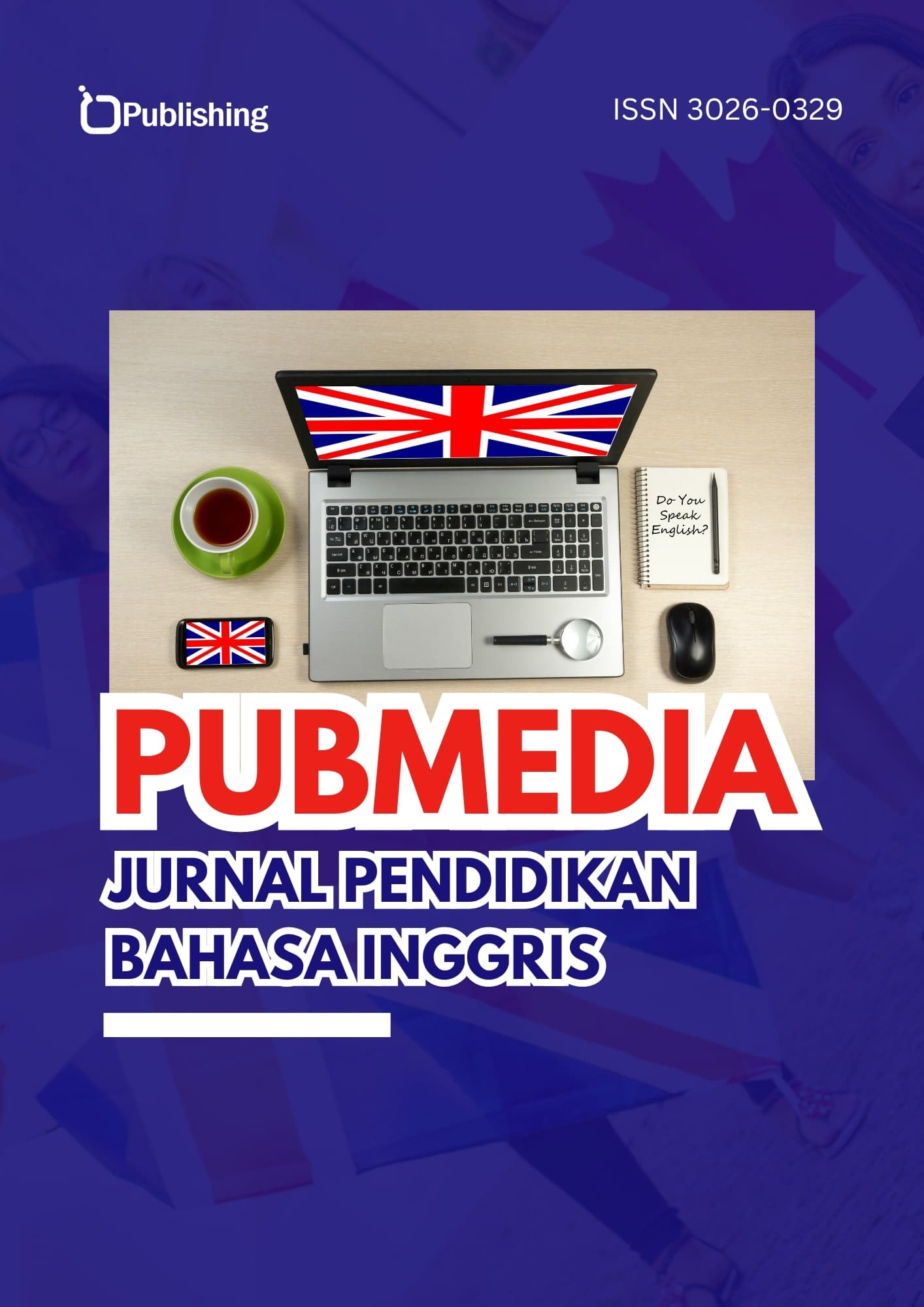The Effectiveness of Outline Technique on Students' Writing Skills in Coherent Paragraphs
DOI:
https://doi.org/10.47134/jpbi.v1i1.15Keywords:
outline technique, writing skill, coherent paragraphsAbstract
Writing is the activity of expressing and communicating ideas in words. People write letters, text his messages, e-mails to communicate and may also express their feelings by writing diaries. By writing, people create and express their ideas in an organized process. The more they write, the better their thinking skill will be. This research is quantitative research using quasi-experimental design (post- test only). Re- searchers conducted research on students at MAN 02 Jember. There are two research variables, the independent variable is an outline technique, the dependent variable is writing skills. The researcher took two classes as samples, X Agama 1 consist of 25 students (experimental group) and X Agama 2 consist of 25 students (control group). The research instrument used in this method is essay questions. Based on the results, the average value of the experimental class for the post- test was 82.80. The average value of the experimental group is higher than the average value of the control group. The sig- nificance value based on the analysis on the test is 0.000 <0.05. The alternative hy- pothesis (Ha) is accepted because there is a significant difference in writing skill between students who are taught with an outline technique and students who are taught with teacher conventional method. From the results, can be concluded that there is a significant effect of the Outline Technique on Students' Writing Skills in Coherent Paragraphs at MAN 02 Jember in the 2022/2023 academic year.
References
Aizawa, I. (2023). Beyond the threshold: Exploring English language proficiency, linguistic challenges, and academic language skills of Japanese students in an English medium instruction programme. Language Teaching Research, 27(4), 837–861. https://doi.org/10.1177/1362168820965510 DOI: https://doi.org/10.1177/1362168820965510
Browne, a. (2007). teaching and learning communication, language and literacy. new york: SAGE. DOI: https://doi.org/10.4135/9781446211700
Faradhibah, RN, Nur, N.A. (2017). Analyzing Students Difficulties in Maintaining Their Coherence an Cohesionin Writig Process. Makassar: Universitas Islam NegeriMakassar.
Ghozali, I. 2015. Aplikasi Analisis Multivariate dengan Program SPSS. Semarang: Badan Penerbit Universitas Diponegoro.
Hogue, O. A. (2009). Writing Academic English. New York: Longman.
Kamilah, T. (2018). the effect of using outline technique to improve stuents writing ability in writing descriptive text. retain, 202-210.
Karjono, j. s. (2020). coherence in thesis proposal writings of undergraduate students. journal of english language and language, 17-30. DOI: https://doi.org/10.36597/jellt.v4i1.7687
Kartawijaya, S. (2018). “Improving Students Writing Skill in Writing Paragraph through an Outline Teqchnique” CURRICULA :Journal of Teaching and Learning. 3(3) p155. DOI: https://doi.org/10.22216/jcc.2018.v3i3.3429
Kim, Y. J. (2020). Multimodal Composing and Traditional Essays: Linguistic Performance and Learner Perceptions. RELC Journal, 51(1), 86–100. https://doi.org/10.1177/0033688220906943 DOI: https://doi.org/10.1177/0033688220906943
Kim, Y. S. G. (2020). Structural relations of language and cognitive skills, and topic knowledge to written composition: A test of the direct and indirect effects model of writing. British Journal of Educational Psychology, 90(4), 910–932. https://doi.org/10.1111/bjep.12330 DOI: https://doi.org/10.1111/bjep.12330
Lei, J. (2019). Doctoral candidates’ dual role as student and expert scholarly writer: An activity theory perspective. English for Specific Purposes, 54, 62–74. https://doi.org/10.1016/j.esp.2018.12.003 DOI: https://doi.org/10.1016/j.esp.2018.12.003
Lin, C. J. (2019). An online peer assessment approach to supporting mind-mapping flipped learning activities for college English writing courses. Journal of Computers in Education, 6(3), 385–415. https://doi.org/10.1007/s40692-019-00144-6 DOI: https://doi.org/10.1007/s40692-019-00144-6
Mao, S. (2019). Investigating written corrective feedback: (Mis)alignment of teachers’ beliefs and practice. Journal of Second Language Writing, 45, 46–60. https://doi.org/10.1016/j.jslw.2019.05.004 DOI: https://doi.org/10.1016/j.jslw.2019.05.004
Teng, F. (2020). The role of metacognitive knowledge and regulation in mediating university EFL learners’ writing performance. Innovation in Language Learning and Teaching, 14(5), 436–450. https://doi.org/10.1080/17501229.2019.1615493 DOI: https://doi.org/10.1080/17501229.2019.1615493
Wang, Y. M. (2014). a short analysis of discourse coherence. journal of language teaching and research, 65-460. DOI: https://doi.org/10.4304/jltr.5.2.460-465
Zainuddin, S. Z. B. (2019). English language and graduate employability. Education and Training, 61(1), 79–93. https://doi.org/10.1108/ET-06-2017-0089 DOI: https://doi.org/10.1108/ET-06-2017-0089
Zhang, L. J. (2021). Examining the effects of comprehensive written corrective feedback on L2 EAP students’ linguistic performance: A mixed-methods study. Journal of English for Academic Purposes, 54. https://doi.org/10.1016/j.jeap.2021.101043 DOI: https://doi.org/10.1016/j.jeap.2021.101043
Zou, D. (2019). Flipping an English writing class with technology-enhanced just-in-time teaching and peer instruction. Interactive Learning Environments, 27(8), 1127–1142. https://doi.org/10.1080/10494820.2018.1495654 DOI: https://doi.org/10.1080/10494820.2018.1495654
Downloads
Published
How to Cite
Issue
Section
License
Copyright (c) 2023 Nabila Rizqiyani

This work is licensed under a Creative Commons Attribution 4.0 International License.










